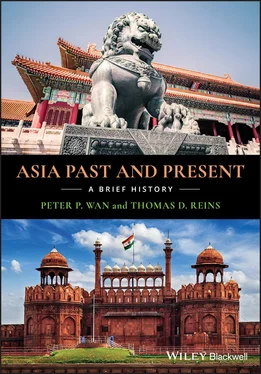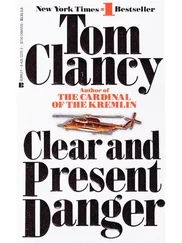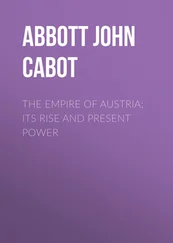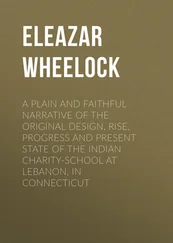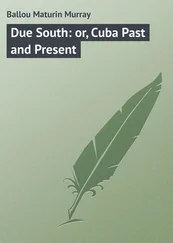Suggested Readings and Viewings
1 Thomas J. Barfield, The Nomadic Alternative (Englewood Cliffs, NJ: Prentice Hall, 1993).
2 Jean‐Pierre Bocqute‐Appel and Ofer Bar‐Yosef, eds., The Neolithic Demographic Transition and Its Consequences (New York: Springer, 2008).
3 K. C. Chang, The Archaeology of Ancient China, 4th ed. (New Haven, CT: Yale University Press, 1986).
4 Joseph Hutchinson, Farming and Food Supply: The Interdependence of Countryside and Town (New York: Cambridge University Press, 2009).
5 Christopher Isett and Stephen Miller, The Social History of Agriculture: From the Origins to the Current Crisis (Lanham, MD: Rowman & Littlefield, 2017).
6 Jonathan Kenoyer, Ancient Cities of the Indus Valley Civilization (New York: Oxford University Press, 1998).
7 Nayanjot Lahiri, ed., The Decline and Fall of the Indus Civilization (New Delhi: Ravi Dayal Publisher, 2000).
8 Mongol (2007), dir. by Sergei Bodrov.
9 J. R. McNeill and William H. McNeill, The Human Web: A Bird’s Eye View of World History (New York: W. W. Norton, 2003).
10 Dougald J. W. O’Reilly, Early Civilizations of Southeast Asia (New York: Rowman and Littlefield, 2007).
11 Himanshu Prabha Ray, Sanghol and the Archaeology of Punjab (New Delhi: Aryan Books International, 2010).
12 Robert Redfield, The Primitive World and Its Transformations (Ithaca, NY: Cornell University Press, 1953), especially chap. 1.
13 Robert Scarre, ed., The Human Past: World Prehistory & the Development of Human Societies, 4th ed. (New York: Thames and Hudson, 2018).
1 1Ian Morris, The Measure of Civilization: How Social Development Decides the Fate of Nations (Princeton: Princeton University Press, 2013), p. 5.
2 2Martin W. Lewis and Karen E. Wigen, The Myth of Continents: A Critique of Metageography (Berkeley: University of California Press, 1997), p. 3. The Association for Asian Studies, for instance, generally follows this geographical range.
3 3D. R. SarDesai, India: The Definitive History (Boulder, CO: Westview Press, 2008), p. 23.
2 The Land and the People of Ancient China to 221 BCE: Xia, Shang, and Zhou Dynasties
In order to understand a person, you must know his background. The same is true of nations. In order to understand a nation and interact with it successfully, you must know its history.
Introduction to the Study of Chinese History
China has attracted the attention of the West for many centuries. Its vast territory, large population, and long history are impossible to ignore. The Italian merchant‐adventurer Marco Polo (ca. 1254–1324) purportedly visited China and returned home to tell his story. He was among the first to stir the West’s imagination about the wealth and power of that distant civilization.
Until very recently, only a handful of Western missionaries, merchants, and scholars have taken a serious interest in China. But times have changed. Globalization has shrunk the world, and China’s rapid rise has made it a major player in world affairs. Consequently, the study of Chinese history has taken on a new relevancy, urgency, and intensity. It has become an essential part of any person’s education.
China is unique in that it has the oldest continuing civilization in today’s world. The ancient civilizations of Egypt, Mesopotamia, and the Indian Subcontinent all had their day of glory, but then each was superseded by other civilizations long before modern times. The Chinese civilization, however, has gone through repeated cycles of rise and fall and rise yet again. It resembles the legendary phoenix that would burn and rise again from its own ashes.
The study of China’s history is made easier by its rich store of historical information. The Chinese have had a deep reverence for history throughout the ages. They see history as a guide to current action, and believe that the lessons of history can point an individual or a nation in the right direction to avoid repeating past mistakes and move smoothly forward into the future. Thanks to this tradition, China has preserved more comprehensive records of its past than any other civilization.
| 1500th century BCE–100th century BCE |
Old Stone Age: “Beijing Ape Man” unearthed at Zhoukou Dian 700,000 years ago; hunters and gatherers |
| 100th century BCE–24th century BCE |
New Stone Age: Banpo Village ca. 6000 years ago; farmers |
| ca. 2300–2100 BCE |
Three ancient kings: Legendary Sage‐Kings Yao, Shun, and Yu |
| ca. 2000 BCE |
Bronze Age: Bronze used to make weapons and ceremonial items |
| ca. 2000–1600 BCE |
Xia Dynasty: No direct evidence but likely China’s first dynasty |
| ca. 1600–1100 BCE |
Peak of China’s Bronze Age; first direct evidence for civilization in China unearthed at Anyang, Henan Province |
| 1046–221 BCE |
Shang Dynasty overthrown by Zhou Dynasty, the first recorded dynastic change; China ruled by “Son of Heaven,” whose mandate provides future dynasties political legitimacy |
| 1122–770 BCE |
Western Zhou Dynasty: Feudal political order presided over by the Zhou monarchs at Xian capital; introduction of iron upsets ancient political and social order; frontier barbarians force the Zhou rulers to move capital east to Luoyang |
| 770–221 BCE |
Eastern Zhou Dynasty: The emergence of numerous political states that challenge both the dynasty and each other, producing ongoing political chaos and intellectual resourcefulness; eventually the State of Qin will end the Warring States period by unifying China in 221 BCE; the Hundred Schools of Thought will deliver basic political and intellectual tools to create China’s bureaucratic model of government that lasts until 1912 CE |
China’s historical records come in a great variety of shapes and forms. The Chinese made written records of their activities on oracle bones, bronze vessels, bamboo strips, silk fabrics, and paper. Their earliest inscriptions on oracle bones date back to 1200 BCE, and their oldest surviving books were written before 500 BCE. Bureaucrats at all levels of government and scribes of powerful clans were consumed with a passion for record keeping. They left behind mountains of records covering population numbers, taxes and revenues, good and bad harvests, floods and droughts and famines, trade, war and peace, diplomatic negotiations, and earthquakes and eclipses. Individuals kept personal accounts, diaries, and collections of poetry and essays. It is not uncommon for an average Chinese family to be able to trace its family tree back many centuries. Private and government‐sponsored discussions had their records as well. Therefore, we have detailed accounts of intense polemics at the highest levels of government on the benefits of government intervention in the marketplace, as well as philosophical debates on the merits of Buddhism and individual autonomy. Historians, poets, and novelists drew epical portraits of their times. Secular and religious art and literature provide in‐depth portrayals of the lives and psyches of China’s people, covering the whole spectrum of humanity from royalty to ordinary people.
Archaeological sites are numerous in China. The remains of imperial palaces and burial sites, temples, villages, private collections of artifacts, and so on serve to round out the modern historian’s knowledge of China’s past. As China’s modernization moves ahead at a dizzy pace, archaeologists are unearthing artifacts that were buried for millennia. Paradoxically, while more and more of China’s past is coming to light, so is more and more of it being destroyed. The discovery of the Qin terra‐cotta armies is an example of the former, and the building of the Three Gorges Dam on the Yangtze River is an example of the latter.
Читать дальше
